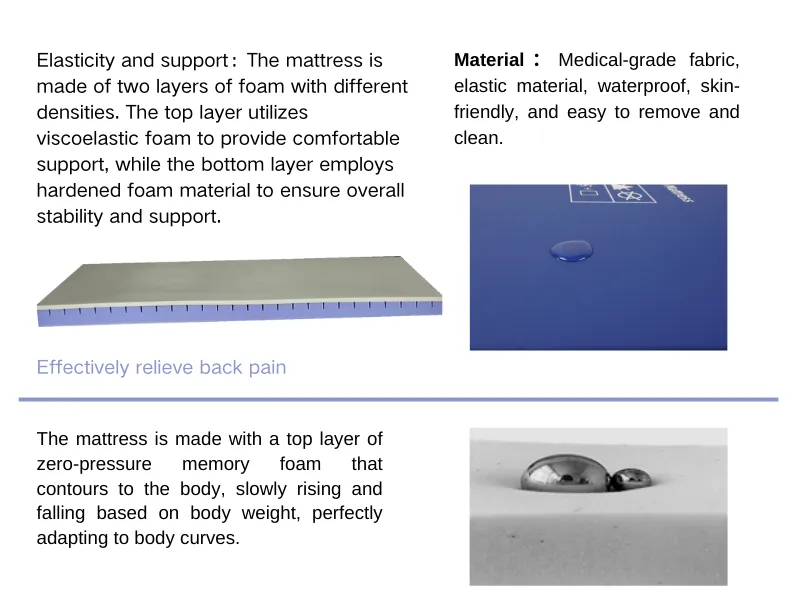Effective Strategies for Managing Pressure Injuries in Clinical Practice and Improving Patient Outcomes
Understanding Famous Pressure Injury Care
Pressure injuries, also known as pressure ulcers or bedsores, are a significant concern in healthcare settings, particularly for individuals who are immobile or have limited mobility. These injuries occur when sustained pressure on the skin restricts blood flow, leading to tissue damage. The prevention and management of pressure injuries have garnered attention from healthcare professionals, and various renowned institutions have developed protocols and best practices to address this issue effectively.
The Importance of Prevention
Preventing pressure injuries is a paramount focus in patient care. Research indicates that it is far more effective to prevent pressure injuries than to treat them once they occur. Organizations like the National Pressure Injury Advisory Panel (NPIAP) emphasize the need for regular skin assessments, especially for patients at high risk. Regular repositioning, using specialized mattresses and cushions, and maintaining skin hygiene are essential preventive measures.
Moreover, educating patients and caregivers about the signs of early pressure injuries can promote awareness and proactive measures. This education should include information on proper nutrition, as well-nourished skin is less susceptible to injury. Collaborating with dietitians to ensure patients receive diets rich in proteins, vitamins, and minerals can significantly bolster skin health and resilience.
Treatment of Pressure Injuries
Despite best efforts, pressure injuries may still develop. The management of these injuries requires a multidisciplinary approach, including physicians, nursing staff, dietitians, and wound care specialists. The treatment protocol typically includes assessing the stage of the pressure injury, which ranges from Stage I (non-blanchable erythema) to Stage IV (exposed bone, tendon, or muscle). The treatment plan should then cater to the specific stage and characteristics of the injury.
famous pressure injury care

For instance, Stage I injuries may be effectively managed with pressure relief and skin protection, while Stage II injuries often require advanced wound dressings to promote healing and reduce infection risks. More severe injuries, such as Stage III and IV, may necessitate more complex interventions, including debridement and, in some cases, surgical interventions to remove necrotic tissue or repair underlying structures.
Best Practices from Leading Institutions
Various healthcare institutions have established evidence-based guidelines for pressure injury care. For example, the Veterans Health Administration (VHA) has implemented comprehensive training for staff on pressure injury prevention and management, showcasing a commitment to reducing these injuries among vulnerable populations. Likewise, The Joint Commission has outlined standards that healthcare facilities must meet to ensure effective pressure injury prevention programs are in place.
Another notable initiative is the implementation of technology in pressure injury care. Pressure mapping devices help healthcare providers assess the risk of pressure injuries by measuring the intensity and distribution of pressure on a patient's skin. This innovative approach allows for the tailoring of pressure-relieving strategies to individual patients.
Conclusion
Pressure injury care is an essential aspect of providing quality healthcare, particularly for at-risk populations. From prevention through education to advanced treatment modalities, the multifaceted approach highlights the importance of interdisciplinary collaboration in managing pressure injuries effectively. By staying abreast of the latest research and best practices, healthcare providers can significantly reduce the incidence of pressure injuries and improve patient outcomes. In this way, the commitment to pressure injury care reflects a broader dedication to enhancing the overall quality of patient care in healthcare settings worldwide.
-
the-truth-about-orthopedic-mattresses-for-sore-back-painNewsAug.23,2025
-
space-saving-benefits-of-a-single-mattress-cubeNewsAug.23,2025
-
eco-friendly-advantages-of-a-silicon-mattressNewsAug.23,2025
-
how-to-fix-sagging-in-a-special-mattressNewsAug.23,2025
-
how-ambulance-stretcher-mattresses-reduce-pressure-injuriesNewsAug.23,2025
-
best-cleaning-practices-for-a-hospital-mattress-doubleNewsAug.22,2025
-
Mattresses Designed for Back Pain ReliefNewsAug.08,2025

